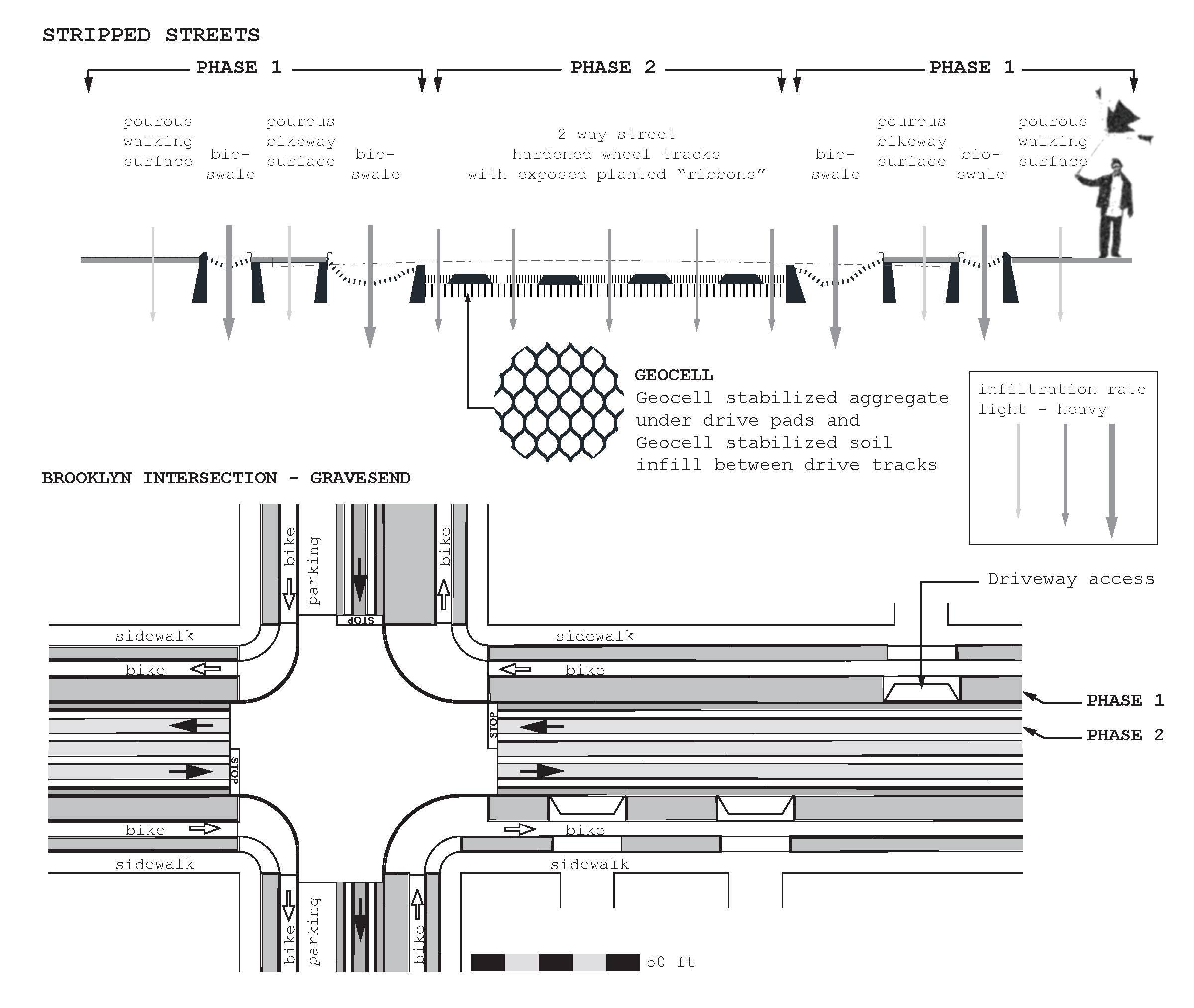“Gray Matters” Waterproofing New York Denise Hoffman Brandt and Catherine Seavitt Nordenson editors, TerreformUR (2014) 40-59.
There has been much discussion about what to build to forestall the impacts of climate change phenomena in coastal cities. This emphasis on projects over processes reinforces the cultural idea that the urban issues we will confront are determinate and defined. Yet, climate change phenomena, and climate science for that matter, are characterized by indeterminacy, not precision. Project renderings describing new, attractive built structures with impossibly lush green plantings populated by people seemingly happy in their security against future hazard establish irrelevant, even unrealistic, criteria for successful urban design and planning. The communication of ideas for future cities should go beyond false assurances and easy gratification to promote a rich, nuanced awareness of both risk and reward. To explore these thoughts, I drew a living below-ground condition as the basis for three process-driven strategic scenarios to mitigate impending urban water issues. Each scenario links an aspect of water infrastructure (infiltration, storage, and transfer) that transforms—or in the case of the waffle cistern, sustains—human lifestyles while reviving the lifeless sub-grade gray matter generated by carpet urbanism. Proposed technologies to recover that robust ground derive from past measures, current practices, and emerging material research. Representation of the proposals was part of the design mission to imagine alternative future urban ecosystems. The drawings run the gamut from wonkish technical illustrations to fantastical renderings of a dramatic subterranean world alive with soil bacteria, nematodes, and other crucial soil micro-biota that are inextricable within the city above.








